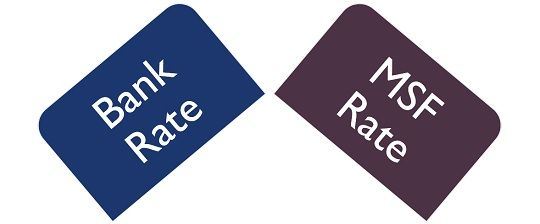In the ever-changing world of finance, knowing the important numbers is crucial for smart choices, especially when borrowing or lending money. In India, one such vital number is the Marginal Standing Facility (MSF) rate. This rate, set by the Reserve Bank of India (RBI), affects how much it costs for banks to borrow money and how much money is available in the financial system. Understanding the MSF rate helps individuals and businesses grasp the cost of borrowing and the availability of funds, guiding their financial decisions effectively.
Page Contents
Understanding the Current MSF Rate
The Marginal Standing Facility (MSF) rate, determined by the Reserve Bank of India (RBI), signifies the interest rate banks pay to borrow funds overnight from the central bank, backed by government securities. It aids the RBI in managing short-term liquidity in banks, serving as a reflection of the central bank’s economic outlook. This rate influences lending rates, bond yields, and investment decisions, thereby molding the lending practices of banks and investment strategies of individuals. Comprehending the MSF rate provides valuable insight into the management of borrowing expenses and the broader economic well-being.
Implications for Borrowers
The present MSF rate carries substantial implications for individuals in search of financial products such as home loans. Mortgage rates typically align with the current interest rate climate, underscoring the importance for potential borrowers to remain vigilant regarding fluctuations in the MSF rate. Keeping abreast of changes in this rate is crucial, as it directly influences the borrowing costs associated with home loans. As such, individuals aspiring to secure favorable terms and make informed financial decisions must closely monitor shifts in the MSF rate.
Home Loan EMI Calculator
The Home Loan EMI Calculator is vital for homebuyers, allowing them to estimate their monthly payments based on loan details like amount, tenor, and interest rate. With the fluctuating MSF rate, this tool helps borrowers assess affordability and plan finances wisely. By using the calculator, individuals can make informed decisions, ensuring their housing finances are managed effectively and align with their financial capacity.
Utilizing a Home Loan EMI Calculator is quite simple. Below are the steps:
Step 1: Enter the desired loan amount for your home loan, which constitutes the principal loan sum.
Step 2: Select the loan tenor, usually measured in years, which determines the duration of your loan repayment period.
Step 3: Input the interest rate provided by the lender for the home loan, which can vary depending on market conditions and individual borrower circumstances.
Step 4: After entering the loan amount, tenor, and interest rate, click the calculate or ‘EMI’ button. The calculator will then determine your Equated Monthly Installment (EMI).
Step 5: The calculator will show the calculated EMI, along with a detailed breakdown of principal and interest components. This breakdown illustrates the portion of each payment dedicated to repaying the loan principal and the amount allocated to interest.
Housing Loan Eligibility Criteria
Understanding housing loan eligibility criteria is crucial alongside monitoring interest rates for securing financing. Lenders consider factors like income, credit score, and debt-to-income ratio when reviewing loan applications. Given that the MSF rate impacts borrowing costs, borrowers must stay informed about eligibility requirements established by financial institutions.
- Lenders evaluate your income to assess your repayment capability, often setting a minimum income threshold for housing loan eligibility.
- Your credit score reflects your creditworthiness and payment history, impacting loan approval and interest rates.
- Most lenders specify minimum and maximum borrower ages, typically around 21 years minimum.
- Stable employment history is preferred, usually requiring 1 to 3 years of consistent employment.
- A lower Debt-to-Income (DTI) ratio, below 40-50%, is preferred by lenders to ensure manageable loan payments.
- Documentation like proof of identity, address, income, and property details is necessary for loan applications.
Conclusion
Staying updated on the current MSF rate is vital for informed financial decisions. Utilizing tools like the Home Loan EMI Calculator and understanding housing loan eligibility criteria helps navigate market changes. Proactively monitoring key indicators like the MSF rate ensures financial resilience and the ability to seize opportunities in a dynamic economy.

